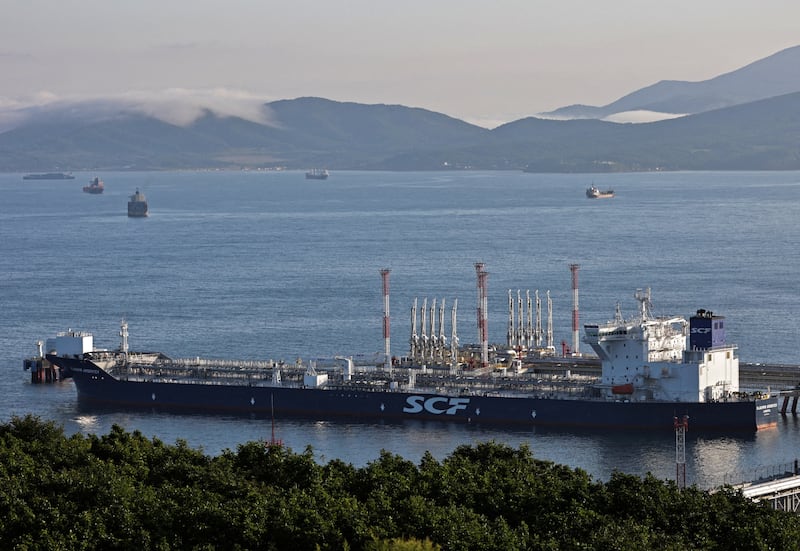Oil prices were steady in morning trading on Wednesday after settling lower overnight due to a strengthening US dollar and in anticipation of the possibility of further interest rate increases from the US Federal Reserve, which is set to release minutes of its last meeting.
Brent, the benchmark for two thirds of the world’s oil, was trading 0.55 per cent lower at $82.59 a barrel at 10.16am UAE time, West Texas Intermediate, the gauge that tracks US crude, was down 0.63 per cent at $75.88 a barrel.
Brent futures fell 1.2 per cent on Tuesday to $83.05 while WTI dropped 0.2 per cent to $76.16.
“Minutes from the Fed’s last meeting will be released this evening and are likely to echo comments made by policymakers in recent weeks about rates needing to rise further and remain higher for longer,” Emirates NBD said in a research note on Wednesday.
Last week’s US economic data pointed to stubborn inflation in the world’s largest economy, making a case for larger interest rate increases.
Earlier this month, the Fed raised interest rates by 25 basis points — the eighth increase since March 2022.
The current target range for interest rates set by the Fed is 4.5 per cent to 4.75 per cent, which is about 50 bps below the end-of-year projection of 5.1 per cent.
An increase in interest rates can result in a rise in the value of the dollar, causing oil priced in dollars to become costlier for those holding other currencies.
The US Dollar Index — a measure of its value against a weighted basket of major currencies — has gained about 2 per cent over the last month.
Russia could extend its output cuts depending on the market situation, state news agency Tass reported its Deputy Prime Minister Alexander Novak as saying.
“We will see how the market situation will unfold, and depending on this, decisions will be taken on the market,” said Mr Novak. “The present decision has only been made for March.”
Russia, the world’s second-largest oil producer after Saudi Arabia, said it would cut production by 500,000 bpd, or about 5 per cent of output, next month after the West imposed price caps on its crude and refined products.
On February 5, the G7 and the EU agreed to set the price cap at $100 a barrel for products that trade at a premium to crude, such as diesel, and $45 a barrel for products that trade at a discount, such as naphtha and fuel oil.
The price cap was introduced along with an EU ban on Russian diesel and other refined products.
The International Energy Agency has predicted that the global supply of crude oil will surpass demand in the first half of this year.
However, the agency also noted that the balance could swiftly transition to a deficit as demand rebounds and Russian output declines.
The Paris-based agency expects global oil demand to rise by 2 million bpd this year, with 900,000 bpd coming from China alone.






